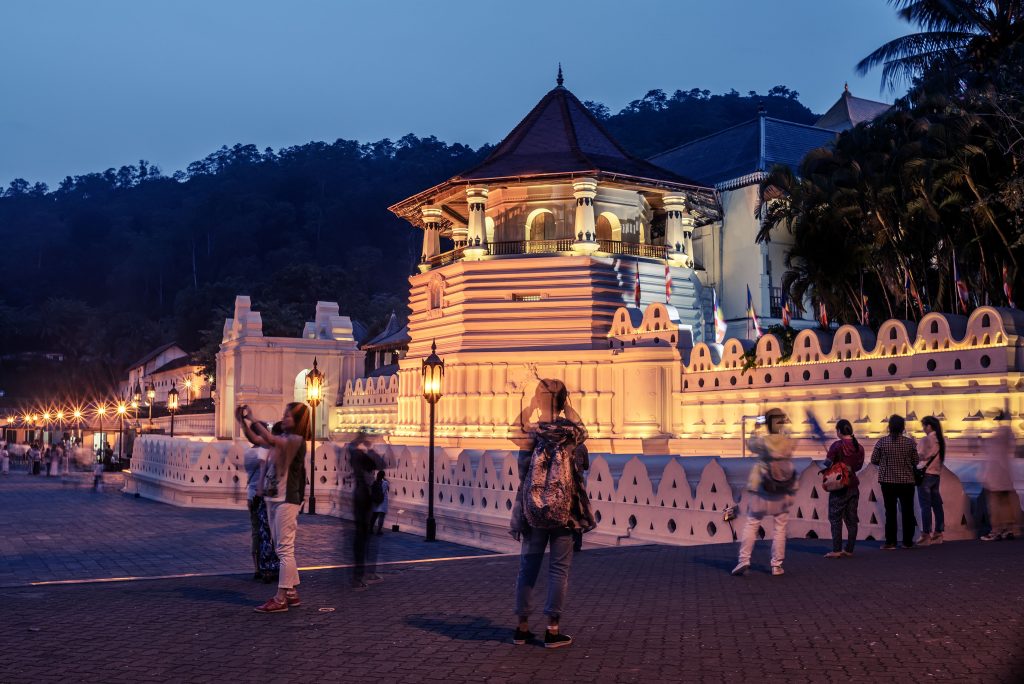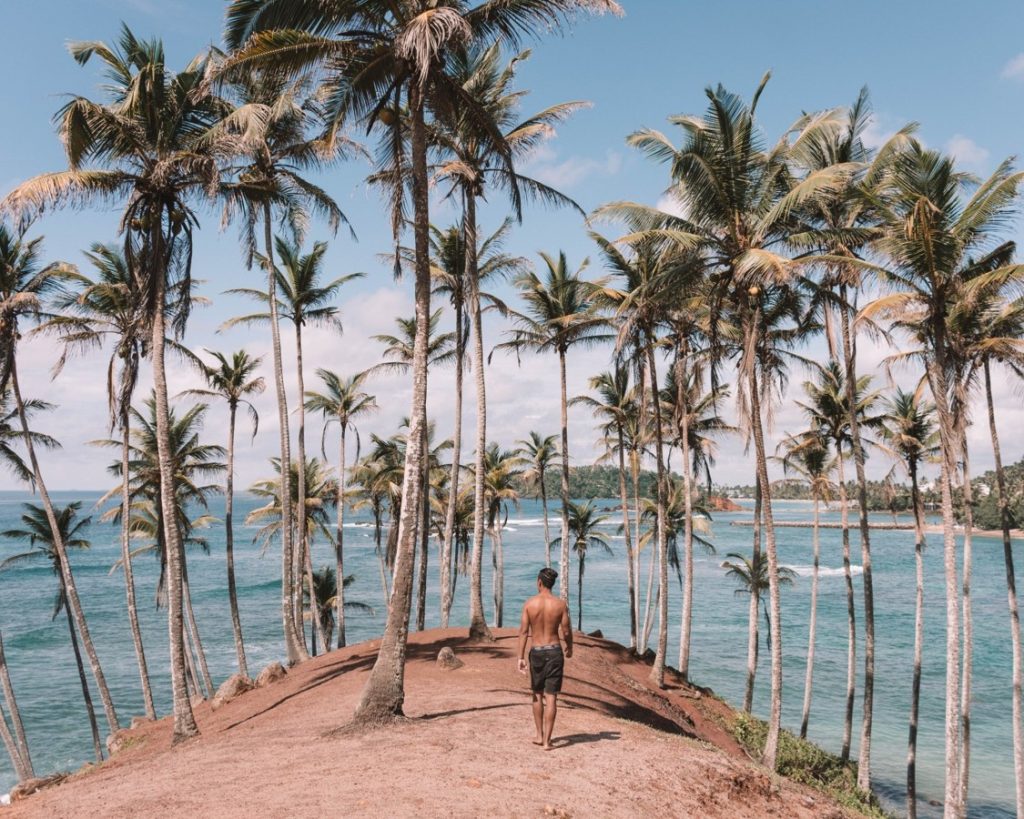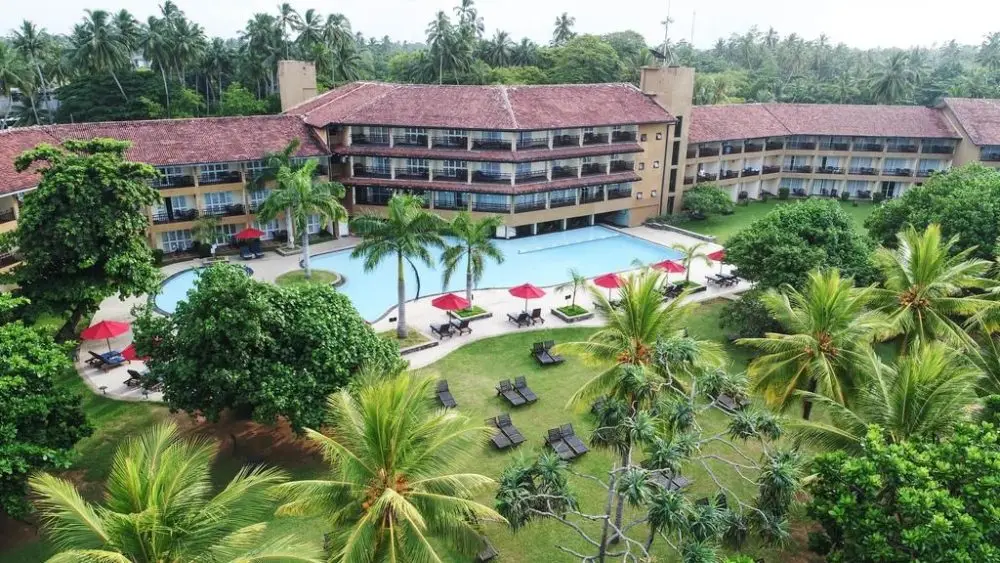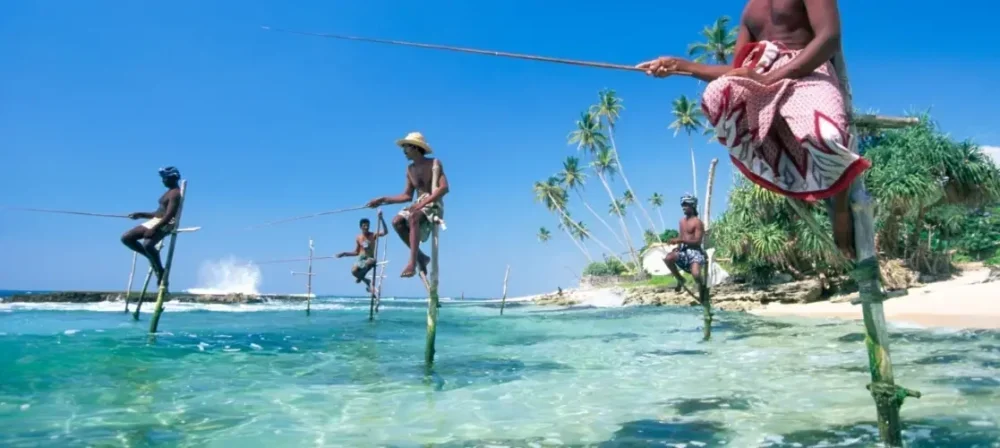Sri Lanka is an island nation that combines stunning beaches, rich culture and natural attractions. The island offers a bunch of cool activities that will suit both history and culture lovers and those who prefer an active holiday. For travellers who decide to travel to this amazing destination in 2025, it is important to choose in advance which Sri Lanka excursions are worth visiting.

Sigiriya: ancient stone fort
Sigiriya is one of the most famous historical sites in Sri Lanka. It is a huge stone cliff with the ruins of an ancient fortress and a royal palace on top of it. Sigiriya is known for its incredible architecture as well as stunning murals that depict beautiful ladies, considered the symbol of the region. A tour of Sigiriya allows you to immerse yourself in the atmosphere of the past in Sri Lanka, as the ancient fort was built as far back as the 5th century AD.
- What’s included: a trip to the top of the cliff with spectacular views of the surrounding area. Along the way you can explore water gardens and ancient buildings.
- Prices: from 30 to 50 USD depending on the organiser and type of tour.
- Best time to visit: morning hours or late evening to avoid the heat and the influx of tourists.
Candy: Temple of the Buddha’s Tooth
 Kandy is one of the cultural centres of the state and the last city that was the capital before British colonisation. One of the most famous attractions, which houses a sacred relic, the Temple of Buddha’s Tooth. The building hosts daily ceremonies that provide a unique insight into the island’s culture and religious traditions.
Kandy is one of the cultural centres of the state and the last city that was the capital before British colonisation. One of the most famous attractions, which houses a sacred relic, the Temple of Buddha’s Tooth. The building hosts daily ceremonies that provide a unique insight into the island’s culture and religious traditions.
- What’s included: guided temple tours, visits to local markets and museums in Sri Lanka, and a walk around Kandy Lake.
- Prices: from 20 USD, there are more expensive packages with additional services.
- The best time to visit: morning, when the temple is not yet crowded with tourists.
Yala National Park: safaris and wildlife
Yala is one of the country’s most famous national parks, home to leopards, elephants, crocodiles and many other species of animals and birds. It is an ideal safari destination for tourists to see the island’s nature in its pristine state. The park consists of different zones including open savannahs, dense jungle and coastal areas.
- What’s included: safari accompanied by an experienced guide, opportunity to observe wild animals in their natural habitat.
- Prices: from 50 USD for half a day. Evening and night safaris can cost more – from 80 to 100 USD.
- Best time to visit: morning or late evening hours when the animals are most active.
Pinnawela: elephant nursery
Pinnawela is a home for elephants rescued from abuse or injured in the wild. The nursery has become a popular destination for tourists, where they can not only see the animals, but also participate in feeding and bathing.
- What’s included: a chance to see elephants in their natural environment and watch them bathing in the river.
- Prices: from 15 to 25 USD, depending on the length of the visit and additional services.
- Best time to visit: morning feeding time for the elephants, when they are active and close to visitors.
Sri Lanka Tea Plantation Tour
Sri Lanka is a renowned producer of tea. During the tour, tourists can not only see how the leaves are harvested, but also walk through the green hills, enjoying the stunning views.
- What’s included: a walk through the plantations, a visit to tea factories, a chance to taste different types of the drink.
- Prices: from 20 USD, including tea tasting.
- Best time to visit: any time of the year, but in spring and summer the nature is most green and well-maintained.
Encounters with the giants of the ocean
Sri Lanka is one of the most famous places in the world for whale watching tours. The creatures migrate here for several months of the year, and tourists get the chance to see the giant sea creatures in their natural environment. Also, dolphins often accompany them, creating an unforgettable sight for those who choose to go on a whale tour in Sri Lanka. The location for sightings depends on the season and region, but most programmes focus on the coast of the south-western part of the island, where migrations are most intense.
What’s included:
- Guided boat trip: professional guides lead tours around the sea, talking about the life of whales and dolphins, their migrations and the ecosystems in which they live.
- Whale and dolphin watching: tours take place in comfortable and safe boats that allow you to get close to the whales without disturbing them and observe their behaviour.
- Marine wildlife viewing experience: some programmes also offer the opportunity to see sea turtles, sharks, and other marine life.
Prices
The cost of whale watching tours in Sri Lanka depends on the duration and extras. The average price for a 3-4 hour tour ranges from 50 to 100 USD. Some companies offer more expensive programmes that include additional services like professional photography, snorkelling equipment or even lunch on board. Tours with night dives or longer walks are also available and can cost up to 150 USD or more.
Best time to visit
The season runs from December to April. During this time, the waters around the island are home to a variety of whale species, including humpback, blue and sperm whales. This is the optimal period to see the inhabitants in their natural environment and enjoy the beauty of the marine life.
Galle: fort and ancient city
Galle, with its history and cultural heritage, is one of the most attractive tourist destinations in the country. The city was founded by the Portuguese in the 16th century and later became an important centre of British colonial power. It perfectly combines elements of historical architecture with picturesque ocean views. Walking around Galle immediately immerses you in an ancient atmosphere filled with colonial buildings, forts and beautiful views of the Indian Ocean.
What’s included: The UNESCO World Heritage Site of Galle Fort is the city’s main attraction. A tour of the fort includes visits to various sites, including Sri Lanka’s famous Signal Tower, as well as old Portuguese and Dutch buildings.
Prices
The cost of programmes depends on the duration and level of organisation. A simple tour of the fort will cost from 10 to 25 USD, depending on the route chosen and the number of sites included in the tour. Combination plans are also available, which include visits to other historical and natural sites in the vicinity.
Best time to visit
It is best to visit Galle in the morning hours or late evening, when the temperature is most comfortable and the number of tourists is minimal. During the summer months, it is worth considering possible rainfall, so it is worth keeping an eye on the weather conditions when planning your trip.

Conclusion
 Excursions in Sri Lanka offer amazing opportunities for travellers looking to explore the culture, nature and wildlife of the island. Whether you choose a historical walk, a jungle safari or a relaxing time on the beach, the country offers an exciting experience that will last.
Excursions in Sri Lanka offer amazing opportunities for travellers looking to explore the culture, nature and wildlife of the island. Whether you choose a historical walk, a jungle safari or a relaxing time on the beach, the country offers an exciting experience that will last.
 en
en  ru
ru  de
de  nl
nl  ar
ar  es
es  fr
fr  hi
hi  it
it  pt
pt  el
el 










